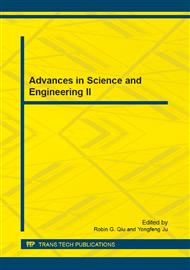[1]
Haifeng Lu. A Novel Automatic Motion Segmentation Method based on Optical Flow[J].2010 IEEE
Google Scholar
[2]
F.Meyer and S.Beucher,"Morphological segmentation,"J. VisualCommun. Image Represent.,vol.1, no.1, p.21–46, Sept. 1990.
Google Scholar
[3]
A.Elgammal,R.Duraiswami,D.Harwood, and L. S. Davis, "Background and foreground modeling using nonparametric kernel density estimation for visual surveillance," Proc. IEEE, vol. 90, pp.1151-1163, 2002.
DOI: 10.1109/jproc.2002.801448
Google Scholar
[4]
Guo J,Kim J W,Kuo C C J.Fast and accurate moving object extraction technique for MPEG-4 object-based video coding[A].In:Proceedings of SPIE[C],Boston,Massachusetts,USA,1999,3653:1210—1221.
DOI: 10.1117/12.334628
Google Scholar
[5]
Mech R,Wollborn M.A noise robust method for 2D shape estimation of moving objects in video sequence considering a moving camera[J].Signal Processing,1998,66(2):203—217.
DOI: 10.1016/s0165-1684(98)00006-1
Google Scholar
[6]
J.G. Choi S.W. Lee S.D. Kim.Spatio-temporal video segmentation using a joint similarity measure. IEEE Trans.Circuits and Systems for Video Technology,vol.7,pp.279-286,Apr, 1997.
DOI: 10.1109/76.564107
Google Scholar
[7]
I.Kompatsiaris M.G. Strintzis.Spatiotemporal segmentation and tracking of objects for visualization of videoconference image sequences. IEEE Trans.Circuits and Systems for Video Technology,vol.10,pp.1388-1402,Dec.2000.
DOI: 10.1109/76.889030
Google Scholar
[8]
L.Patras E.A. Hendriks and R.L. Lagendijk.Video segmentation by MAP labeling of watershed segments.IEEE Trans. Pattern Analysis and Machine Intelligence,vol.23,pp.326-332,2001.
DOI: 10.1109/34.910886
Google Scholar
[9]
C. Kim and J. Hwang, "Video object extraction far abjcct. oticntcd applications", Juumol o/ YLSl Si&mzal Processing, vol.29, pp.7-1, (2001)
Google Scholar
[10]
Meier T,King :Video segmentation for content-based coding[J].IEEE Transactions on Circuits and System for Video,(1999)
Google Scholar
[11]
Aach T,Kaup A,Mester R.Statistical model-based change detection in moving video[J].Signal Processing,1993,31(2):165—180
DOI: 10.1016/0165-1684(93)90063-g
Google Scholar
[12]
R. Thoma and M Bierling, "Motion compensating interpolation considering covered and uncovered background", Signal Processing: Image Communication, Yol.I, No.2, October 1989, pp.191-212.
DOI: 10.1016/0923-5965(89)90009-x
Google Scholar
[13]
Whalen AD.Detection of signals in noise[M].New York andLondon:Academic Press,(1971)
Google Scholar
[14]
J.Cany,"A computational approach to edge detection,"IEEE Trans.Pattern Anal.Machine Intell.,vol.PAMI-8,pp.679-698,Nov.(1986)
DOI: 10.1109/tpami.1986.4767851
Google Scholar
[15]
Xin Weiwang,"A spatio-temporal method based on edge detection",Journal of Information Engineering University,vol. 2,June,(2007)
Google Scholar


